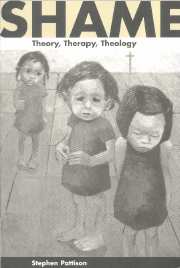2 - Problems in approaching shame
Published online by Cambridge University Press: 05 June 2012
Summary
Shame is like a subatomic particle. One's knowledge of shame is often limited to the trace it leaves
(Lewis 1992: 34).Study of the phenomenon of shame is characterised by a huge variety of approaches and insights (Gilbert 1998). For a long time, I hoped to arrive at a synthesis that would accommodate and make sense of them all. I wanted to identify a lowest common denominator to all instances and uses of shame. I sought a controlling meaning or experience, possibly embedded in a basic physiological response, that would permit a synthetic understanding of all kinds and instances of shame.
I now believe there is no fixed essence of meaning or experience that underlies all usages and instances of the category ‘shame’. Like an onion, shame is made up of enfolded and overlapping, but also discrete, meanings and understandings; there is no ‘essential onion’ or ‘essential shame’ at the centre of meaning or experience. Nor, indeed, to change the analogy, is there any Esperanto or universal set of words and concepts into which all experiences and instances of shame can be translated. The reifying language of substance and essence applied to shame is misleading if it implies that there is a stable, objective core to this phenomenon.
It has taken me a long time to have confidence in the judgment that approaches to shame are mostly disparate and incommensurable. The most useful way of understanding them together is to adopt a kind of family resemblance theory (Parrott and Harré 1996a: 42ff.).
- Type
- Chapter
- Information
- ShameTheory, Therapy, Theology, pp. 39 - 64Publisher: Cambridge University PressPrint publication year: 2000



